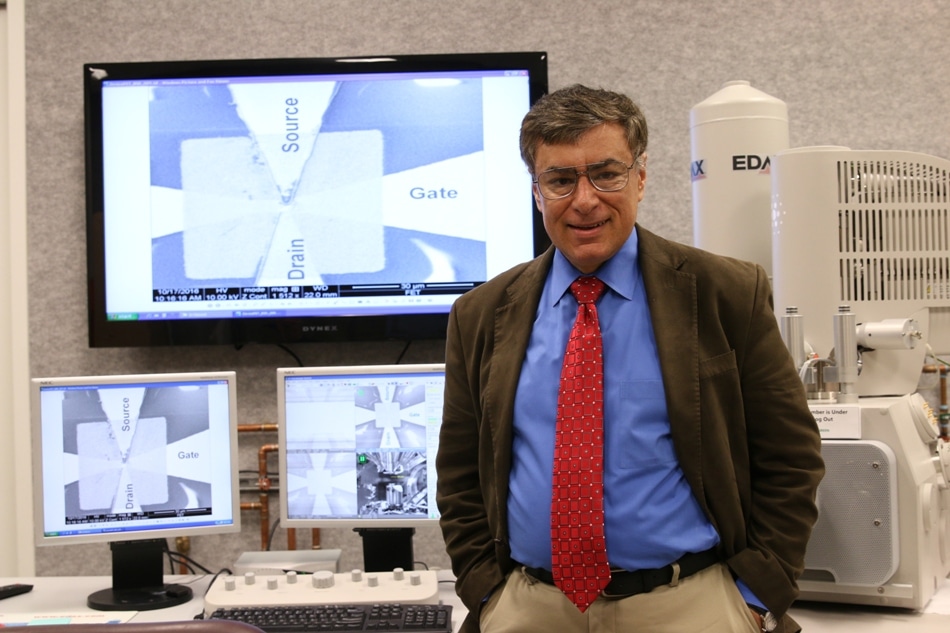Oct 26 2016
According to the National Resource Defense Council, Americans waste up to $19 billion annually in electricity costs due to “vampire appliances,” always-on digital devices in the home that suck power even when they are turned off.
 PHOTO CREDIT: Dan Hixson/University of Utah College of Engineering
PHOTO CREDIT: Dan Hixson/University of Utah College of Engineering
But University of Utah electrical and computer engineering professor Massood Tabib-Azar and his team of engineers have come up with a way to produce microscopic electronic switches for appliances and devices that can grow and dissolve wires inside the circuitry that instantly connect and disconnect electrical flow. With this technology, consumer products such as smartphones and computer laptops could run at least twice as long on a single battery charge, and newer all-digital appliances such as televisions and video game consoles could be much more power efficient.
Tabib-Azar’s research was published in a new paper this week in the current issue of Solid State Electronics. The paper was co-authored by Intel engineer Pradeep Pai, Omnivision Technologies engineer Yuying Zhang and IM Flash engineer Nurunnahar Islam Mou.
To operate different functions, all electronics have switches that instantaneously turn electrical flow on and off throughout the circuitry, much like turning a light switch on and off. But unlike a mechanical switch, these solid-state switches waste small doses of electricity while they are in a waiting state.
“Whenever they are off, they are not completely off, and whenever they are on, they may not be completely on,” says Tabib-Azar, who also is a professor with the Utah Science Technology and Research (USTAR) initiative. “That uses battery life. It heats up the device, and it’s not doing anything for you. It’s completely wasted power.”
Tabib-Azar and his team have devised a new kind of switch for electronic circuits that uses solid electrolytes such as copper sulfide to literally grow a wire between two electrodes when an electrical current passes through them, turning the switch on. When you reverse the polarity of the electrical current, then the metallic wire between the electrodes breaks down—leaving a gap between them—and the switch is turned off. A third electrode is used to control this process of growing and breaking down the wire.
“The distance between the two electrodes where the wire is grown can be as little as a nanometer long, which is as thin as 1/100,000 of the diameter of a hair,” Tabib-Azar says.
Consequently, billions of these switches could be built onto a computer processor or in solid-state memory chips such as the RAM in a laptop computer. In a smartphone, for example, this technology could be employed in the communications circuitry of the phone, which typically wastes battery power while it is in a state waiting to be used.
Besides better power efficiency, another advantage of this technology is it would produce less heat in the appliance or device because less electrical current is constantly running though its circuitry. Heat buildup has especially been a problem with laptops and phones and can affect the reliability of components over time.
Tabib-Azar added that this process doesn’t require expensive retooling of manufacturing plants to implement it because these plants already use materials such as copper sulfide in the manufacturing of electronics.
Right now, the only disadvantage to this process is that it is slower than typical switches in regular silicon-based electronics because of the time it takes to grow and break down the wires. But Tabib-Azar expects that to improve as he and his researchers continue to optimize the process. He also said this technology could be used for devices where speed isn’t a priority but battery power is.
“In lots of applications you really don’t utilize the full speed of the silicon anyway,” he says. “Right now, the biggest problem to solve is reducing the power leakage and addressing the energy-efficiency issues.”